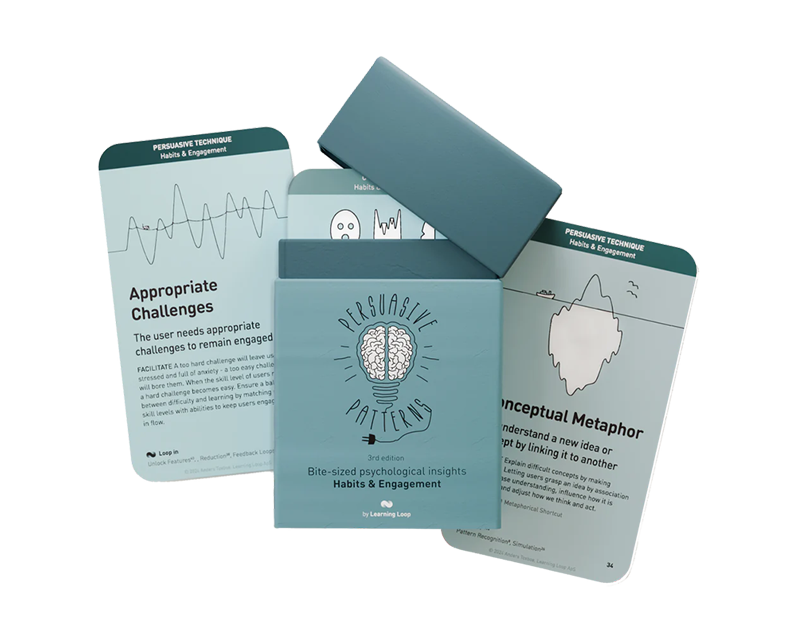
Rewards are a powerful tool in shaping user behavior by providing positive reinforcement after specific actions are taken. This pattern leverages the principle that rewarded behavior is more likely to be repeated, making it fundamental in habit formation and behavior modification.
Rewards can vary widely from tangible items like gifts or coupons to intangible benefits like points, badges, or enhanced status within a community. The primary goal is to increase engagement, retention, and loyalty by aligning user actions with the objectives of a product or service, ultimately driving desired outcomes more effectively.
Imagine a teacher wanting to increase student participation in class discussions. To do this, the teacher introduces a reward system: for each contribution a student makes, they earn a star. After accumulating ten stars, the student can exchange them for a privilege, such as choosing a game for the class to play on Fridays. This simple system motivates the students to participate more actively in discussions, as each contribution brings them closer to a reward they value. The anticipation of earning enough stars for their desired reward keeps the students consistently engaged over time.
Building on the classroom scenario, consider a mobile fitness app that aims to encourage daily exercise among its users. Similar to the teacher’s method, the app awards points to users each time they complete a workout. Accumulating points unlocks levels within the app, and reaching certain levels grants users rewards, such as discounts on fitness gear or a free month of premium access. This gamified reward system motivates users to maintain their exercise routines, as each workout not only brings them closer to their fitness goals but also offers tangible rewards that enhance their user experience.
The study
One of the most influential studies that has shaped our understanding of the rewards pattern in psychology is B.F. Skinner’s work on operant conditioning. Skinner, an American psychologist, conducted experiments in the mid-20th century that demonstrated how the consequences of a behavior influence its likelihood of being repeated. He used a device known as the “Skinner box” to show how rats and pigeons could be trained to perform certain actions in response to rewards like food. Skinner’s findings highlighted the powerful role that rewards play in shaping behavior by reinforcing the actions that lead to positive outcomes. This principle has profound implications, not only for understanding animal behavior but also for designing human environments and interactions where behavior modification is a goal.
Skinner, B. F. (1938). The Behavior of Organisms: An Experimental Analysis. New York, NY: Appleton-Century.
The concept of using rewards to influence behavior has ancient roots but was formally studied and named in the field of behaviorism during the early 20th century. Skinner’s experiments with animals in the 1930s and 1940s provided a systematic approach to understanding and applying reinforcement principles. These principles were later adopted in various fields, including education, psychology, business, and technology, evolving over the decades into sophisticated systems for enhancing user engagement and motivation in digital interfaces.
The persuasive pattern of “Rewards” is based on the psychological principle of operant conditioning, a theory formulated by B.F. Skinner. This principle posits that behaviors followed by positive reinforcement are more likely to be repeated, whereas those followed by no reinforcement or negative consequences are less likely to recur. In operant conditioning, rewards function as reinforcements, increasing the likelihood that the behavior preceding the reward will be repeated in similar future situations.
Operant conditioning highlights the importance of consequences in shaping behavior and has been applied extensively in both psychology and behavioral economics. Rewards, as a form of positive reinforcement, effectively encourage the repetition of desired behaviors by associating them with beneficial outcomes. This mechanism is central to various applications, from educational settings and workplace productivity to consumer behavior and digital user engagement.
The application of rewards in persuasive design leverages this principle by strategically introducing incentives that align user actions with desired outcomes, thereby facilitating habit formation, enhancing engagement, and driving consistent participation.
Let’s explore a few key concepts relevant to designing impactful reward systems:
- Intrinsic vs. extrinsic motivation
Intrinsic motivation refers to engaging in an activity for the inherent satisfaction and pleasure derived from the activity itself, without any external incentives. This type of motivation is driven by personal interest, enjoyment, or a sense of challenge. In contrast, extrinsic motivation is driven by external factors such as rewards, recognition, or avoiding negative consequences. These motivations can significantly influence user behavior within digital applications. Intrinsic motivation is often linked to higher quality of engagement and long-term persistence, while extrinsic motivation can effectively initiate behavior change or encourage specific actions in the short term. Designing reward systems requires a careful balance to enhance extrinsic motivation without undermining the intrinsic motivations that sustain long-term engagement and satisfaction. - Operant conditioning
Operant conditioning is a behavioral principle developed by B.F. Skinner, emphasizing that behaviors followed by positive reinforcements (rewards) are more likely to be repeated. In the context of digital apps, this principle can be utilized to structure rewards systems that systematically encourage desirable user behaviors. For example, providing rewards for completing tasks or achieving goals can reinforce these behaviors, making them more frequent. Understanding operant conditioning allows designers to strategically place rewards in a way that the desired actions are continuously reinforced, thereby integrating a habit-forming mechanism within the app’s usage cycle. - Positive and negative rewards (and punishments)
Rewards and punishments can be categorized into positive and negative types. Positive rewards involve presenting something desirable to increase a behavior, such as offering a bonus for surpassing sales targets. Negative rewards, or negative reinforcement, involve removing an unpleasant element in response to a behavior, like canceling a monthly performance review if employees meet certain objectives. Conversely, punishment, whether positive (adding an undesirable consequence like extra work) or negative (removing a privilege), aims to decrease undesirable behaviors. - Reward avoidance
Reward avoidance involves the strategic non-use or withdrawal of rewards to influence behavior, essentially focusing on avoiding negative outcomes as a motivational tactic. This can manifest as avoiding the removal of a positive state (not losing a privilege) or avoiding a negative state (not receiving a penalty). This method leverages the human tendency to strongly prefer avoiding losses to acquiring equivalent gains, known as loss aversion. In practice, reward avoidance can be effective in maintaining minimum standards of behavior but must be used judiciously as it may lead to decreased motivation if overused or perceived as manipulative. - Primary and secondary rewards
Primary rewards are inherently valuable or necessary, such as food, water, or sleep, directly fulfilling a basic need. Secondary rewards, sometimes called conditioned rewards, include money, praise, or status, which have no inherent value but are valued through association and social context. Both types play crucial roles in influencing behavior, with secondary rewards being particularly useful in settings where direct primary rewards are impractical. - Variable rewards vs fixed rewards
Variable rewards are given after an unpredictable number of actions or varying intervals, making them highly effective at maintaining behavior because they exploit natural human interest in unpredictability and novelty. Fixed rewards occur after a known quantity of actions or fixed intervals, which can initially drive strong behavior but may become less effective over time as the reward becomes expected. Each type has strategic uses depending on the desired outcome and the nature of the task. - Reward delivery methods
The effectiveness of a rewards system often hinges on the method of delivery. Key methods include immediate versus delayed rewards, direct versus indirect rewards, and continuous versus intermittent reinforcement. Immediate rewards are given directly following a desired behavior, effectively strengthening the association between the action and the reward. Delayed rewards, while less effective at creating a direct link, can encourage long-term habits and goals. Direct rewards provide tangible or direct benefits related to the behavior, such as bonuses for sales targets. Indirect rewards, such as public recognition, offer psychological or social benefits. Continuous reinforcement rewards every instance of a behavior and is effective during the initial stages of learning. Intermittent reinforcement, rewarding behavior only some of the time, is crucial for maintaining long-term behavioral persistence. - Reward extinction
Extinction occurs when a behavior that was previously reinforced (and thus repeated) no longer receives reinforcement, leading gradually to the cessation of that behavior. This concept is critical in understanding the sustainability of behavior change initiatives; without ongoing reinforcement, even well-established behaviors may decrease over time. Designing for sustained behavior change often involves considering how to phase out rewards without leading to extinction, or how to replace extrinsic rewards with intrinsic motivations.
Designing products with Rewards
As with most behavioral design efforts, begin by gaining a deep understanding of who your users are and what motivates them. This insight will guide you in designing rewards that are genuinely appealing and motivating. Whether your users are motivated by social recognition, personal achievement, or material gains, tailoring the rewards to these drivers can significantly enhance the effectiveness of your rewards system.
Then, clearly identify the specific user actions or behaviors you want to encourage. These could range from completing a purchase, engaging with content regularly, or sharing the app with others. By defining these behaviors, you can more effectively map out how rewards will be distributed.
The system for earning and redeeming rewards should be straightforward and easy to understand. Users should have a clear path to earning rewards, with transparent criteria and a simple redemption process. Complexity can often deter users from participating, reducing the system’s effectiveness.
Having said that, there are several things to consider as you design your reward system:
Tangible vs. intangible rewards
Tangible rewards are physical or material rewards that can include items like gifts, money, or discounts on products or services. Tangible rewards are straightforward and have a clear monetary value, making them highly effective for immediate satisfaction and short-term goals. They are particularly useful in situations where a direct incentive is needed to encourage a specific action, such as purchasing a product, signing up for a service, or completing a feedback form. However, the use of tangible rewards requires careful budgeting and management to ensure that the costs do not outweigh the benefits.
Intangible rewards consist of non-physical rewards that can include points, badges, or status upgrades within a community or system. These rewards often tap into psychological motivations such as recognition, achievement, and personal progress. Intangible rewards are cost-effective and can be particularly powerful over the long term, fostering loyalty and sustained engagement. They work well in gamified environments where earning a badge or achieving a new status can motivate continued participation and competition.
Both types of rewards have their place in product design and should be chosen based on the specific goals of the reward system and the nature of the user’s interaction with the product. While tangible rewards can quickly attract users and drive immediate actions, intangible rewards are crucial for building long-term relationships and can be integrated deeply into the user’s journey and experience with the product. Designers must balance these reward types to create a holistic strategy that maintains user interest and engagement without leading to dependency or diminishing returns.
Reward mechanics: frequency and scheduling
Understanding the dynamics of reward frequency and scheduling is crucial in designing an effective rewards system that enhances user engagement and promotes habit formation. Rewards can be structured around different schedules: fixed or variable, and within these, further categorized into ratio or interval schedules. Each of these has distinct effects on user behavior and activity levels.
Fixed vs. Variable Rewards
Fixed rewards are predictable and consistent, given after a set number of actions (fixed ratio) or after a specific time interval (fixed interval). For example, a user might earn points every fifth comment they post or receive a bonus every month. While fixed rewards can create a reliable pattern that encourages regular activity, they also have a downside. Users might slow down or pause their engagement after receiving a reward because they know exactly when the next reward is due, reducing their incentive to engage continuously.
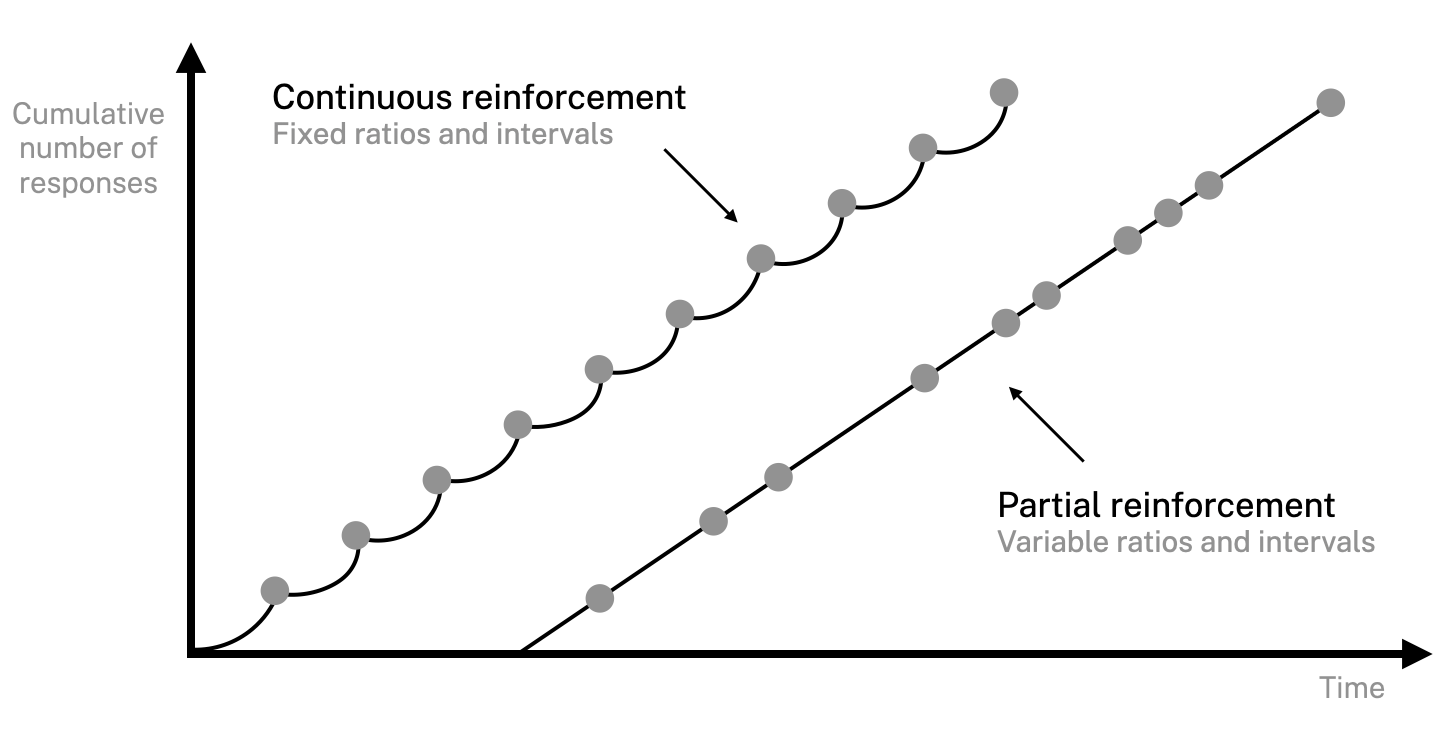
Variable rewards, in contrast, introduce an element of unpredictability and are distributed around an average without a set pattern. This randomness can significantly increase user engagement as it taps into the psychological pull of the unknown—users often continue interacting with the platform in the hope of receiving a reward. Variable rewards are crucial in maintaining a steady level of user activity because they prevent the anticipation of a reward from waning.
- Fixed Ratios
Rewards are given after a consistent number of actions. For example, a user receives a reward every tenth video they upload. This can lead to bursts of activity as users near their reward threshold, followed by a potential drop-off in engagement. - Variable Ratios
Rewards are given after an unpredictable number of actions. This could mean receiving a reward after 5, 12, or 9 actions, determined randomly. This schedule is known to produce high and steady levels of activity because users perceive that any action could potentially lead to a reward. - Fixed Intervals
Rewards are distributed after set time intervals. For instance, users might know they’ll get bonus points every week for logging into an app. This can lead to decreased activity immediately after receiving a reward and a spike just before the next reward is due. - Variable Intervals
Like variable ratios, variable intervals distribute rewards at random time intervals around an average, which keeps users consistently engaged as they cannot predict when the next reward will come.
When implementing a rewards system, it is crucial to consider the nature of the desired user behavior:
- Use variable ratios to maintain high and consistent user activity without predictable pauses.
- Employ fixed ratios or intervals to encourage regular, cyclical activity that aligns with business cycles or usage patterns.
- Mix variable and fixed schedules to balance predictability with excitement, keeping users both comfortable and engaged.
Ethical recommendations
he use of rewards to motivate behavior, while effective, carries potential risks when not managed ethically. One major concern is the over-reliance on extrinsic rewards which can lead to the undermining of intrinsic motivation. When users perform tasks solely for rewards, their inherent interest in the activity may diminish. Additionally, rewards can be manipulative if not aligned with the user’s best interests. For example, excessively rewarding minor activities can encourage addictive behaviors, leading users to spend unreasonable amounts of time or money on a platform. Moreover, if not transparently administered, reward systems might be perceived as unfair, fostering distrust among users who feel the system favors certain users or behaviors unduly.
To ensure that the use of rewards remains ethical and user-centric, consider the following best practices:
- Be transparent
Clearly communicate how rewards are earned and their associated terms. Transparency helps build trust and allows users to feel they are part of a fair system where their efforts are genuinely appreciated. - Balance extrinsic and intrinsic motivations
While rewards can be a powerful motivator, they should not be the sole reason users engage with a product. Encourage intrinsic motivation by making activities enjoyable and fulfilling in themselves, not just means to an end. - Tailor rewards to genuine user needs
Design rewards that add real value to the user’s experience and are aligned with their goals and interests. This approach enhances the user experience and contributes to a more sustainable engagement model. - Avoid exploitative practices
Monitor user behavior to ensure that the rewards system does not foster unhealthy habits. Be cautious about rewarding excessive use and consider implementing limits or reminders for breaks to promote responsible usage.
Real life Rewards examples
Amazon Prime
Amazon offers immediate rewards such as free shipping, exclusive access to products and entertainment, which not only encourages more frequent purchases but also solidifies customer loyalty.
Dropbox
Dropbox provides extra storage space to users who complete specific tasks like referring friends or setting up a tour of the features. This reward system effectively increases user engagement and expands their user base.
Duolingo
This language learning app uses a points system where users earn “Lingots” for completing lessons and streaks, which can be spent in a virtual store. This system motivates users to maintain daily learning habits.
Trigger Questions
- What rewards is the system giving at the moment? Can it give out others as well? Are other forms of rewards more effective?
- Are users excited when they receive rewards or bored by them? And why is this?
- What specific behaviors are we trying to encourage with our rewards system?
- How can we tailor our rewards to the diverse needs and values of our user segments?
- Are our rewards sufficiently attractive to motivate desired behaviors without becoming expected entitlements?
- What feedback mechanisms do we have in place to measure the effectiveness of our rewards?
- How sustainable is our rewards program financially and culturally within our business model?
- Are we maintaining a balance between extrinsic and intrinsic motivations through our rewards?
Pairings
Rewards +
Gamification elements
(Competition, Achievements, Levels) �aIntegrating rewards with gamification elements such as competition, achievements, and leveling systems can greatly increase user engagement. For example, users earn badges or points for completing tasks, which can be compared on leaderboards, encouraging a healthy competitive environment.

Use rewards to encourage continuation of wanted behavior
Rewards + Commitment & Consistency
This combination leverages the psychological need to remain consistent with past actions. By rewarding initial small engagements and gradually increasing the commitment required, users are more likely to continue participating consistently.

Use rewards to encourage continuation of wanted behavior
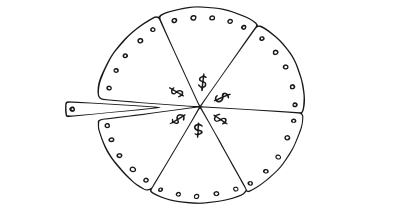
We want to appear consistent with our stated beliefs and prior actions
Rewards + Feedback Loops
Effective feedback, when combined with rewards, can reinforce desired behaviors. For instance, immediate feedback after task completion followed by a reward can strengthen the learning and retention of the desired behavior.

Use rewards to encourage continuation of wanted behavior
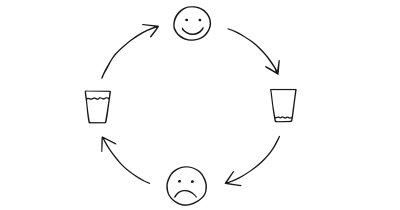
We are influenced by information that provides clarity on our actions
Rewards + Endowed Progress Effect
Providing users with a sense of progress (e.g., visual progress bars that start partly filled) can motivate them to complete tasks. Rewards given as users reach certain milestones further incentivize them to reach the goal.

Use rewards to encourage continuation of wanted behavior

Early help speeds up goal achievement
Rewards + Loss Aversion
Pairing rewards with strategies that highlight potential loss can be highly motivating. For example, offering a reward that can diminish over time unless certain actions are taken leverages both the desire to obtain the reward and the aversion to losing it.

Use rewards to encourage continuation of wanted behavior
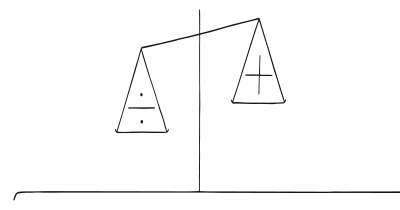
Our fear of losing motivates us more than the prospect of gaining
Rewards + Social Proof
Integrating rewards with social proof, such as displaying rewards that other users have earned, can motivate users by showing that peers value and engage with the app. This combination can increase participation and trust in the rewards system.

Use rewards to encourage continuation of wanted behavior

We assume the actions of others in new or unfamiliar situations
Rewards + Priming Effect
Use priming techniques to set expectations for earning rewards. For example, showing users a preview of potential rewards before they start a task can prime them to engage more deeply in pursuit of those rewards.

Use rewards to encourage continuation of wanted behavior

Decisions are unconsciously shaped by what we have recently experienced
Rewards + Scarcity Bias
Pairing rewards with scarcity (e.g., limited-time badges or points) can create urgency and increase user activity. Users are more likely to take immediate action to not miss out on limited offers.

Use rewards to encourage continuation of wanted behavior

We value something more when it is in short supply
Rewards + Halo Effect
Use the halo effect by associating rewards with well-regarded brands or personalities. Rewards endorsed by celebrities or trusted figures can enhance the perceived value of the rewards.

Use rewards to encourage continuation of wanted behavior

We let impressions created in one area influence opinions in another area
Rewards + Anchoring Bias
Anchor users with an initial high-value reward to set high perceived value expectations, followed by smaller rewards. This can make subsequent rewards feel more achievable while maintaining high engagement levels.

Use rewards to encourage continuation of wanted behavior
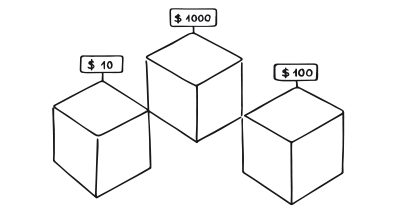
We tend to rely too heavily on the first information presented
Rewards + Conceptual Metaphor
Use metaphoric representations (like climbing a mountain or journey maps) to make the rewards system more engaging. As users progress, the metaphor unfolds, enhancing the narrative of achievement.

Use rewards to encourage continuation of wanted behavior

We understand a new idea or concept by linking it to another
Rewards + Nostalgia Effect
Tap into users’ nostalgia by offering rewards that remind them of past positive experiences, such as vintage items or retro-themed badges. This can deepen emotional engagement and loyalty.

Use rewards to encourage continuation of wanted behavior
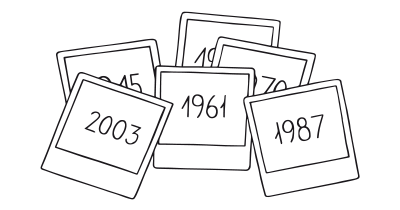
Reminiscing about the past makes us downplay costs
Rewards + Framing Effect
Frame the rewards in a way that highlights their benefits or uniqueness. For example, emphasizing the exclusivity or prestige associated with certain rewards can make them more desirable.

Use rewards to encourage continuation of wanted behavior

The way a fact is presented greatly alters our judgment and decisions
Rewards + Hedonic Adaptation
To combat hedonic adaptation (where the impact of rewards diminishes over time), periodically refresh the rewards system with new incentives or unexpected bonuses to maintain interest and satisfaction.

Use rewards to encourage continuation of wanted behavior
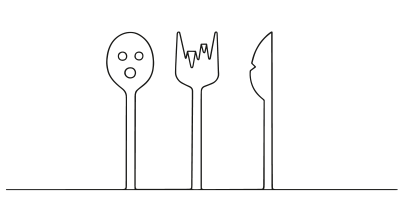
We resume stable levels of happiness despite major positive or negative events
Rewards + IKEA Effect
Involve users in creating their own rewards or achieving them through a series of tasks that require their input or customization. This can increase the perceived value of the rewards due to the effort invested by the users themselves.

Use rewards to encourage continuation of wanted behavior

We place a disproportionately high value on products we helped create
Rewards + Periodic Events
Combine rewards with periodic events or seasonal promotions to keep the user experience fresh and engaging. For instance, offering special rewards during holidays or relevant global events can re-engage users and boost activity during those times.

Use rewards to encourage continuation of wanted behavior

Recurring events help build up anticipation, belonging, and sustained interest
Rewards + Sunk Cost Bias
Leverage the sunk cost bias by designing rewards that build upon previous investments of time or effort by the user. For example, offering increasingly valuable rewards as users continue a subscription service or complete more tasks can motivate them to continue due to their already invested effort.

Use rewards to encourage continuation of wanted behavior
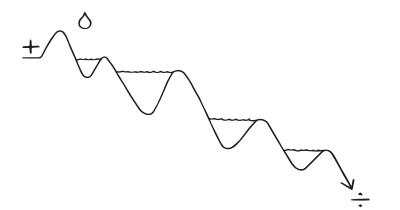
We are hesitant to pull out of something we have put effort into
Rewards + Choice Closure
Integrate rewards with the concept of choice closure, where users feel a sense of completion or closure from making a choice. Offering a reward after making significant decisions or selections can reinforce satisfaction and the decision-making process, encouraging further engagement.

Use rewards to encourage continuation of wanted behavior
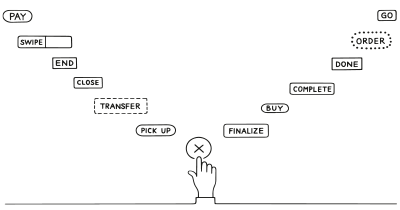
We are more satisfied with decisions when we engage in physical acts of closure
Rewards + Zeigarnik Effect
Pair the rewards system with the Zeigarnik effect, where people remember uncompleted or interrupted tasks better than completed ones. You can design tasks or challenges that are rewarded only upon completion while leaving them visibly incomplete initially. This can keep users engaged, as the desire to complete the task and earn the reward keeps the activity at the forefront of their minds.�a�aIt’s crucial to balance the reward system so that it does not overwhelm or overshadow the core user experience. Rewards should feel like a natural part of the engagement, not a distraction.�a�aTailor the combination of patterns to different user segments. Different users may be motivated by different types of rewards and persuasive techniques, so consider personalizing experiences based on user behavior and preferences.

Use rewards to encourage continuation of wanted behavior

We remember uncompleted or interrupted tasks better than completed ones
A brainstorming tool packed with tactics from psychology that will help you build lasting habits, facilitate behavioral commitment, build lasting habits, and understand the human mind. It is presented in a manner easily referenced and used as a brainstorming tool.
Get your deck!Related plays
- Achievements
- Anchoring Bias
- Choice Closure
- Commitment & Consistency
- Conceptual Metaphor
- Delighters
- Endowed Progress Effect
- Feedback Loops
- Framing Effect
- Goal-Gradient Effect
- Halo Effect
- Hedonic Adaptation
- IKEA Effect
- Loss Aversion
- Nostalgia Effect
- Periodic Events
- Priming Effect
- Rewards
- Scarcity Bias
- Sequencing
- Social Proof
- Status
- Sunk Cost Bias
- Zeigarnik Effect
- The Behavior of Organisms: An Experimental Analysis by Skinner
- Behavioral Modification: Principles and Procedures by Miltenberger
- Reinforcement at Wikipedia (en)
- Skinner, B. F. (1938). The Behavior of Organisms: An Experimental Analysis. New York, NY: Appleton-Century.
- Cameron, J., & Pierce, W. D. (1994). Reinforcement, reward, and intrinsic motivation: A meta-analysis. Review of Educational Research, 64(3), 363-423.
- Lepper, M. R., Greene, D., & Nisbett, R. E. (1973). Undermining children’s intrinsic interest with extrinsic reward: A test of the “overjustification” hypothesis. Journal of Personality and Social Psychology, 28(1), 129-137.
- Kohn, A. (1993). Punished by Rewards: The Trouble with Gold Stars, Incentive Plans, A’s, Praise, and Other Bribes. Boston, MA: Houghton Mifflin Company.
- Bandura, A. (1977). Self-efficacy: Toward a unifying theory of behavioral change. Psychological Review, 84(2), 191-215.
- Pink, D. H. (2009). Drive: The Surprising Truth About What Motivates Us. New York, NY: Riverhead Books.
- Gneezy, U., & Rustichini, A. (2000). A fine is a price. Journal of Legal Studies, 29(1), 1-17.
- Ariely, D., Kamenica, E., & Prelec, D. (2008). Man’s search for meaning: The case of Legos. Journal of Economic Behavior & Organization, 67(3-4), 671-677.
- Deci, E. L., & Ryan, R. M. (1985). Intrinsic Motivation and Self-determination in Human Behavior. New York, NY: Plenum.
- Deci, E. L., Koestner, R., & Ryan, R. M. (2001). Extrinsic rewards and intrinsic motivation in education: Reconsidered once again. Review of Educational Research, 71(1), 1-27.
- Deci, E. L., Koestner, R., & Ryan, R. M. (1999). A meta-analytic review of experiments examining the effects of extrinsic rewards on intrinsic motivation. Psychological Bulletin, 125(6), 627-668.
- Dweck, C. S. (1986). Motivational processes affecting learning. American Psychologist, 41(10), 1040-1048.
- Fehr, E., & Gächter, S. (2000). Cooperation and punishment in public goods experiments. American Economic Review, 90(4), 980-994.
- Lazear, E. P. (2000). Performance pay and productivity. American Economic Review, 90(5), 1346-1361.
- O'Reilly, C. A., & Pfeffer, J. (2000). Hidden value: How great companies achieve extraordinary results with ordinary people. Boston, MA: Harvard Business School Press.
- Stajkovic, A. D., & Luthans, F. (1997). A meta-analysis of the effects of organizational behavior modification on task performance, 1975-1995. Academy of Management Journal, 40(5), 1122-1149.
- Cameron, J., Banko, K. M., & Pierce, W. D. (2001). Pervasive negative effects of rewards on intrinsic motivation: The myth continues. The Behavior Analyst, 24(1), 1-44.
- Murayama, K., Matsumoto, M., Izuma, K., & Matsumoto, K. (2010). Neural basis of the undermining effect of monetary reward on intrinsic motivation. Proceedings of the National Academy of Sciences, 107(49), 20911-20916.
- Hennessey, B. A., & Amabile, T. M. (1998). The conditions of creativity. In R. J. Sternberg (Ed.), The nature of creativity (pp. 11-38). Cambridge, UK: Cambridge University Press.
- Kahneman, D., & Tversky, A. (1979). Prospect Theory: An Analysis of Decision under Risk. Econometrica, 47(2), 263-291.
- Seligman, M. E. P., & Csikszentmihalyi, M. (2000). Positive psychology: An introduction. American Psychologist, 55(1), 5-14.
